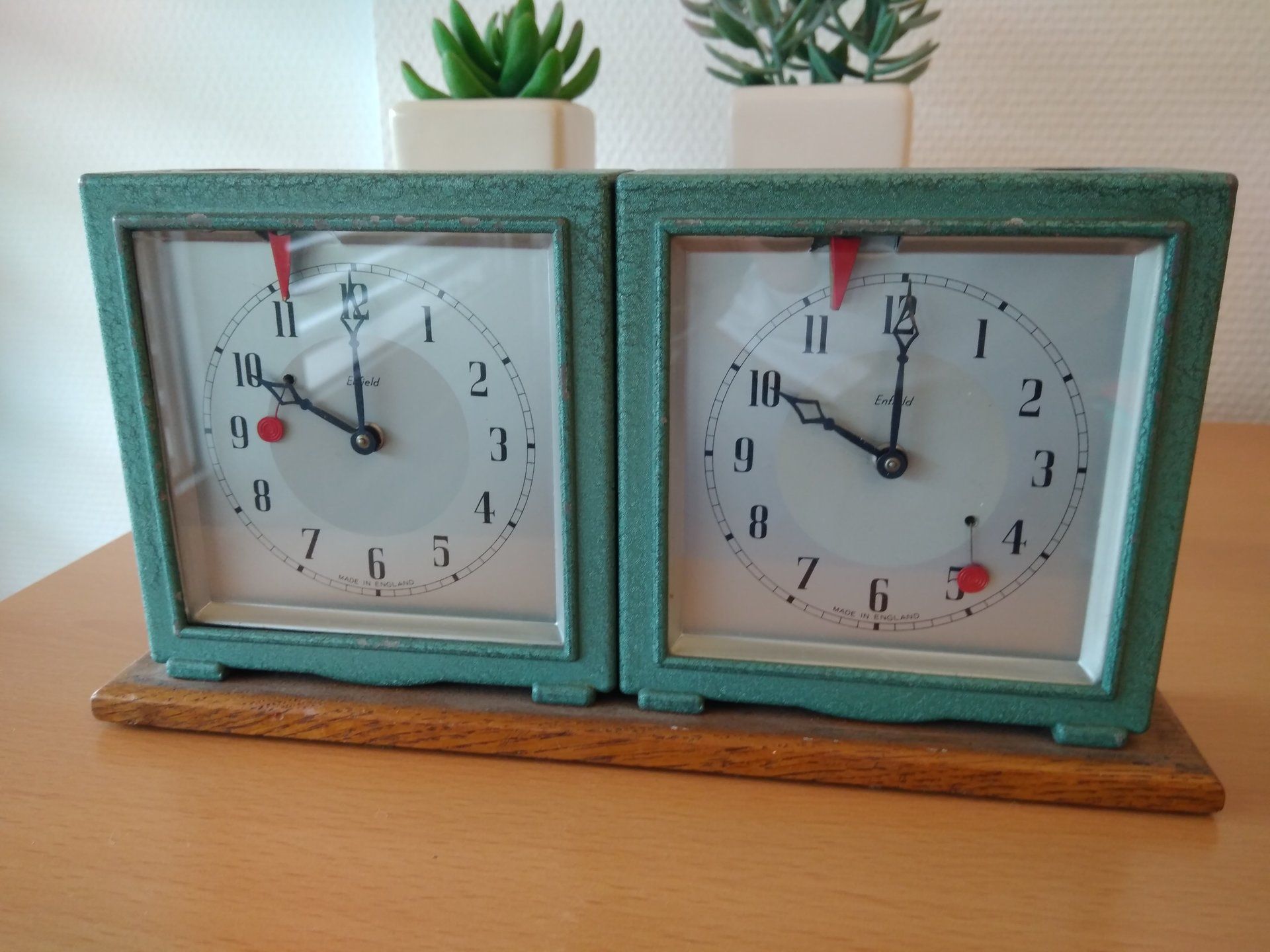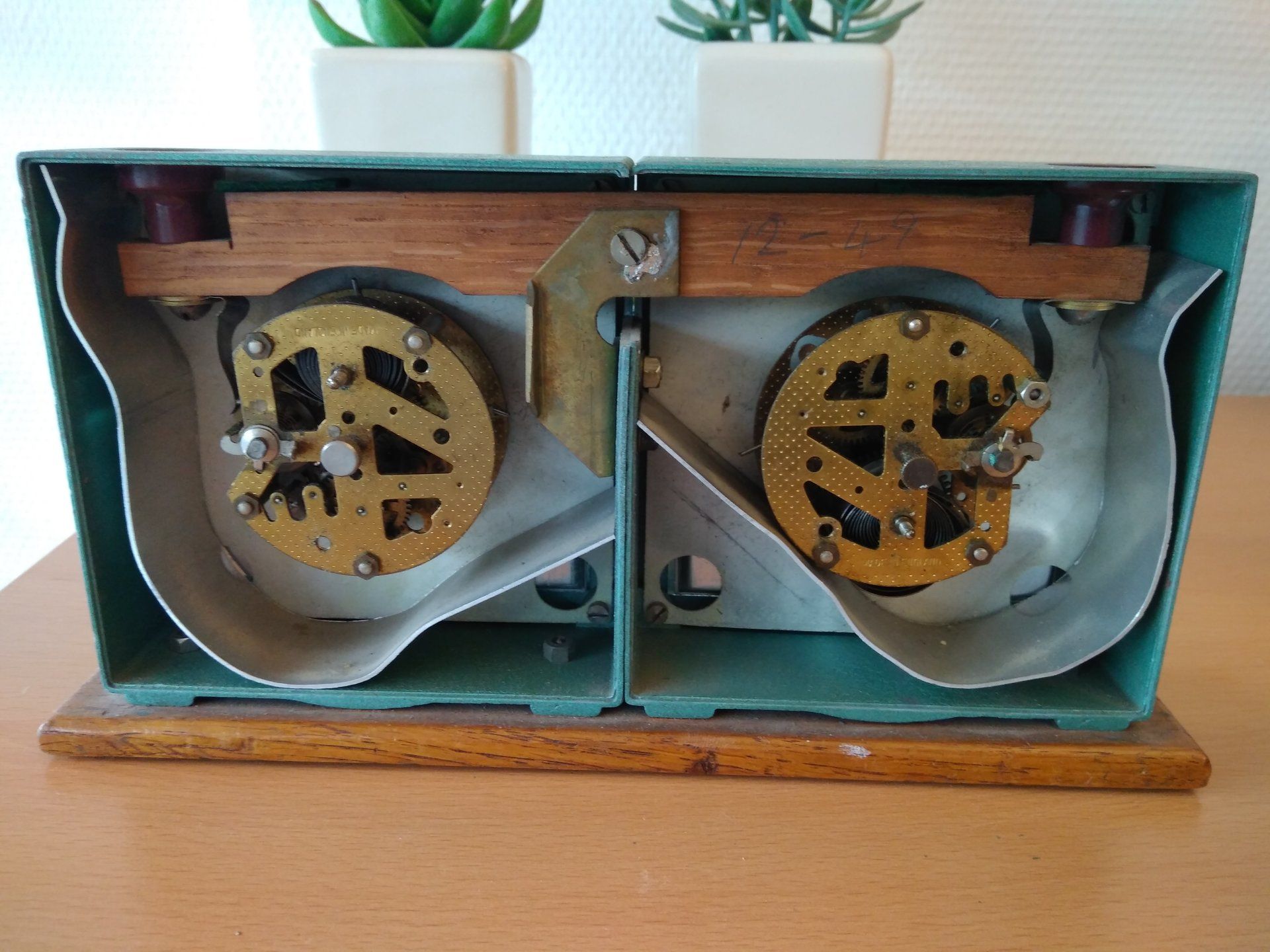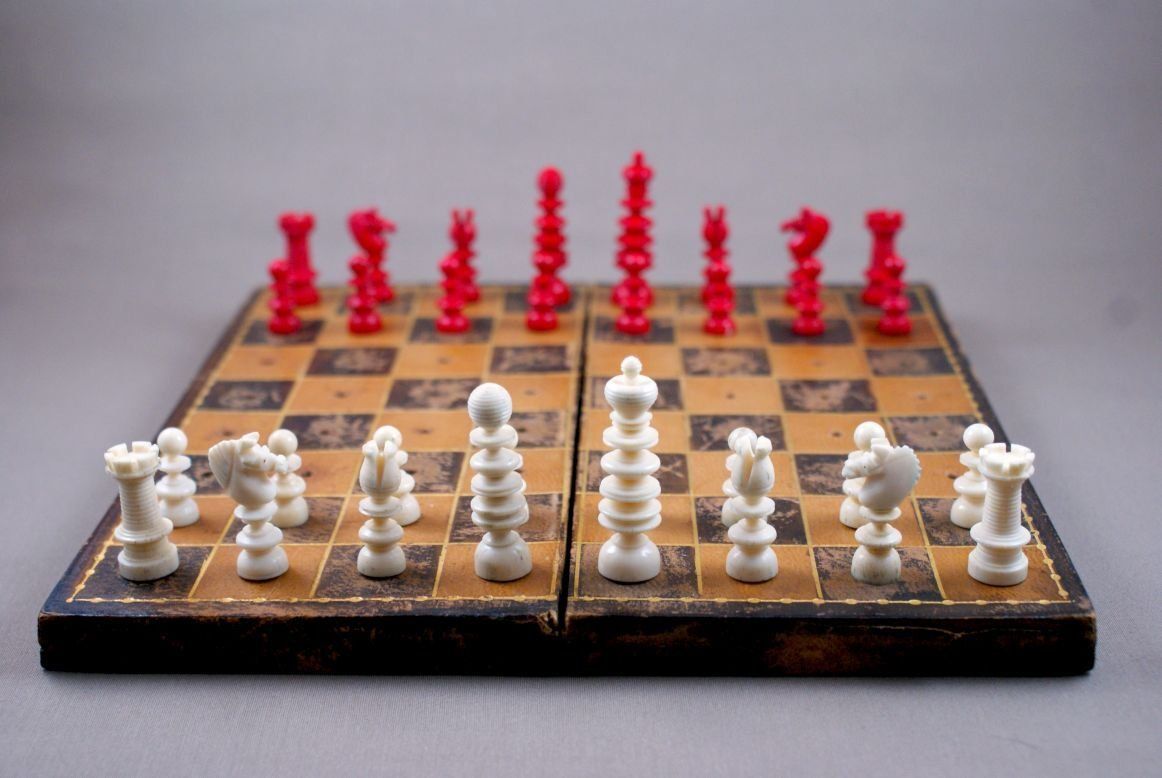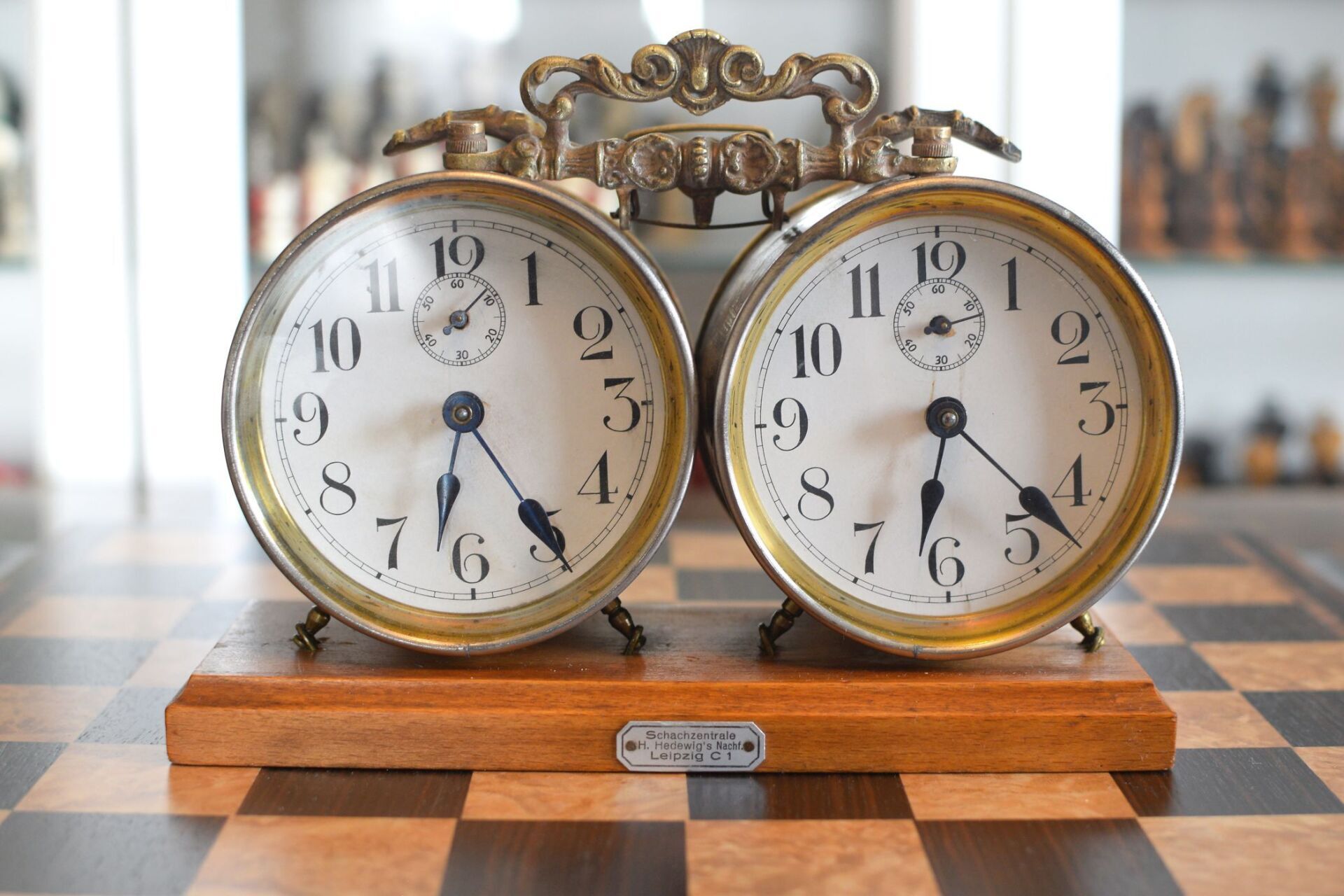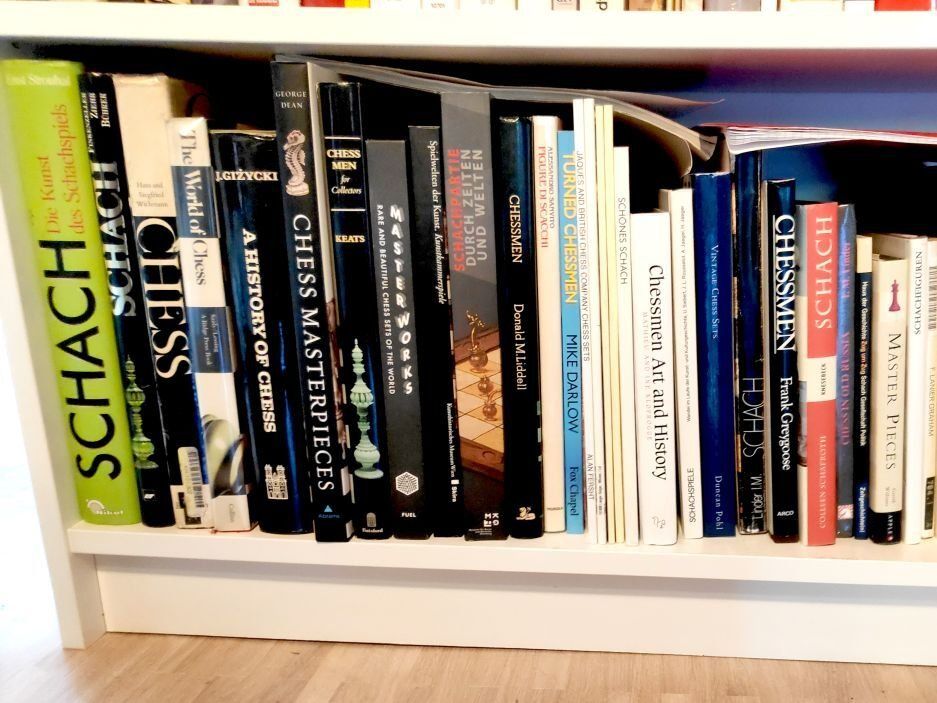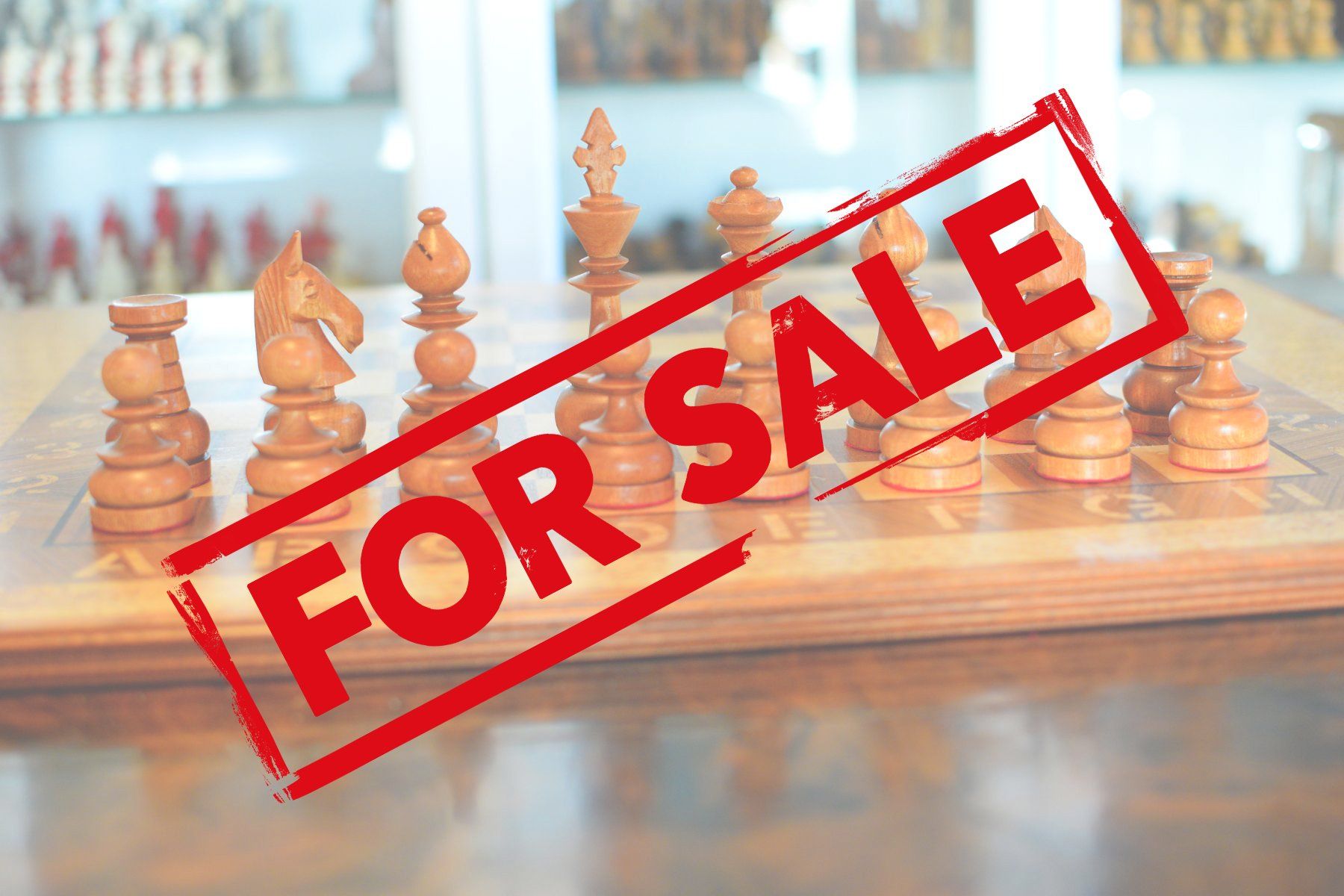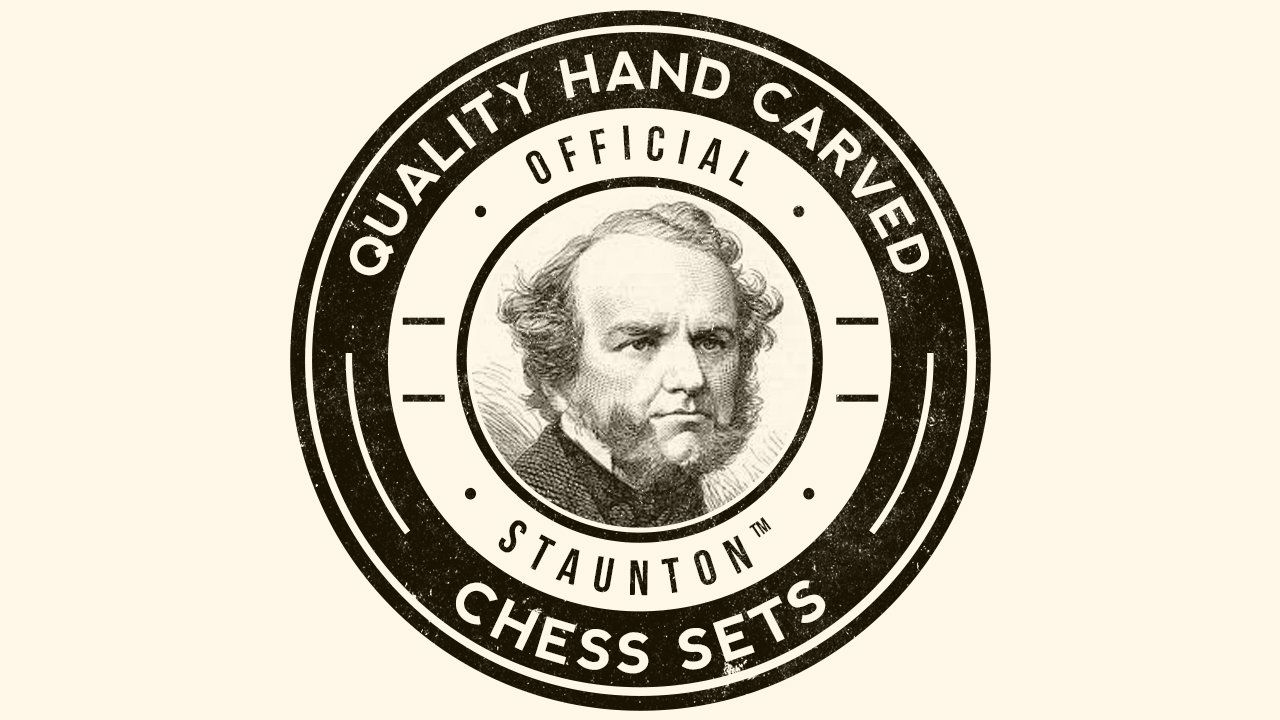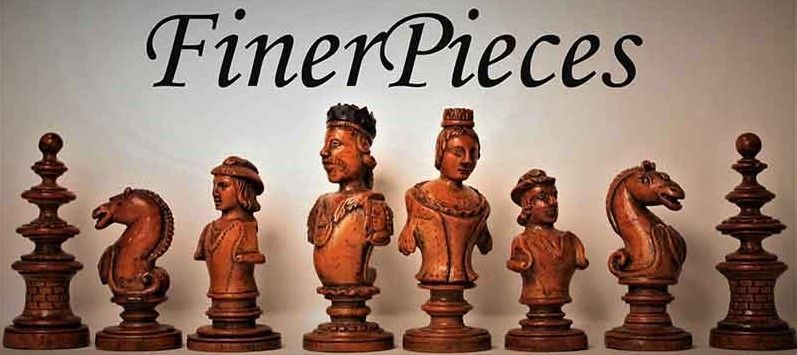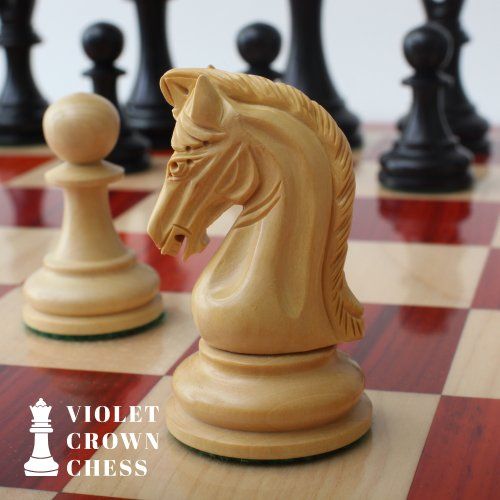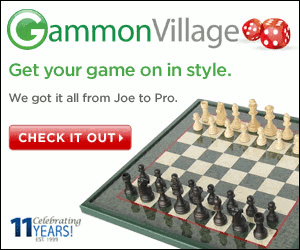
Enfield Chess Clock, England, 1949
Enfield chess clock from 1949 with a metal casing in an original blue-green Enamel paint with burgundy red buttons on the top marked with the word "Push". The clock faces are in Art Deco style marked with the "Enfield" logo and "Made in England" and feature ticking movements resembling a red spiral. The wooden rocker bar on the inside has "12-49" written on it, which is most likely indicating the month the clock was made, i.e. December 1949.
The maker Enfield is in fact Enfield Clock Company (London) Ltd, not to be mistaken with Royal Enfield (or Enfield Cycle company), the former British maker of guns, motorcycles and cars. The Enfield Clock Company (London) Ltd was formed in 1929, by Carl Schatz, J W Roles, Charles Baxter Snr and F H Chisholm at Pretoria Road, Edmonton London N18. Schatz was the owner of Badische Uhrenfabrik in Guttenbach/Germany, who shipped the first machinery over together with a team of 14 persons from Germany (10 men & 4 women), to set the machines up and help with the initial manufacturing. Also shipped were a quantity of clock parts such as plates, wheels pinions etc. so that assembly could be started straight away while the assembly line came up to speed. The first clocks were sold in 1932.
Before the name could be used, Royal Enfield had to grant permission for the use of the name. They agreed providing that the clocks were of the same high quality as their motorcycles.
When the war broke out in 1939, the factory was turned over to war time production and any remaining German staff were detained. After the war, production was moved to Smiths factory at Cricklewood (which is why most of the regular clocks still available today were made under the name "Smiths Enfield" or simply "Smiths") and then later to their Welsh factory about 1955.
The chess clock itself belonged to the Queen Elizabeth's Boys School in Barnet Hertfordshire, which is a very traditional school with 400 years of history. I got the clock from the former School Chess Captain, who attended the school from 1976 to 1982 and who was allowed to take this clock for a donation, when the school upgraded all chess clocks to more modern versions.
